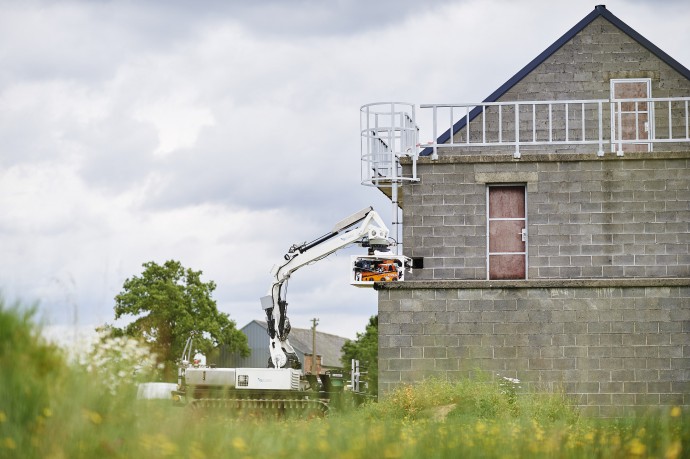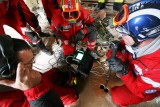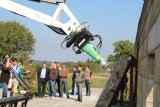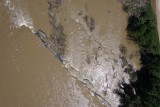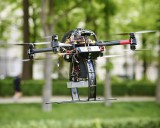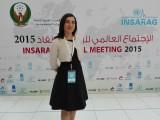ICARUS final field demo successfully took place in Marche-en-Famenne, Belgium
On the 4th of September 2015, the final field trials of the robotic tools developed within the FP7 ICARUS project took place on the training grounds of the Belgian First Aid and Support Team (ICARUS member B-FAST) in Marche-en-Famenne, Belgium. The purpose of the demonstration was to validate the different tools developed by the project partners in a real-life use case scenario. This year, an earthquake similar to the one in Haiti was simulated to showcase how the robotic tools (multiple unmanned ground and aerial vehicles equipped with powerful sensors) can assist Search and Rescue (SAR) teams. The final demo encompassed 4 operational scenarii:
1) B-FAST deployment: the first part of the demonstration consisted in the deployment of the B-FAST Team accompanied with two ICARUS unmanned SAR tools: a fixed-wing endurance solar aeroplane (AtlantikSolar) and a quadrotor helicopter (Eurecat). The B-FAST team rapidly set-up an operational base and started operating the AtlantikSolar for mapping and increasing situatioanal awareness.
2) Outdoor victim search mission in the proximity of a collasped building: upon arrival at site N°2, an unmanned helicopter was used to support the B-FAST Team in assessing the situation, identifying the victim and delivering rescue kit. The ICARUS heavy ground vehicle (Metalliance) was then tested for debris clearance to relief a victim trapped in a collapsed building.
3) indoor SAR operations in an unstable building: as the structure of the building was extremly unstable, the rescue team decided to send a small reconnaissance aerial system with 3D reconstruction capabilities (Skybotix Hexacopter) together with a small unmanned ground vehicle (UKL) to search for potential victims inside the building and without endangering their own life. The indoor SAR mission was succesfully performed thanks to the collaborative work of the two ICARUS platforms.
4) SAR operations in a CBRN context: the last scenario confronted the SAR Team against a potential chemical, biological and radio-nuclear (CBRN) threat.
The event was effectively concluded by a feedback session with both the users and stakeholders present to discuss the future exploitation of the different ICARUS tools.
Pictures of the event are available here.
Video of the event is available here
A video of the event prepared by the Belgian Ministry of Defense is available on: http://www.mil.be/fr/article/icarus-ne-perd-pas-ses-ailes
We also kinldy invite you to read the recent post of Dr. Robin Murphy (Professor of Computer Science and Engineering) who attended to the Demo. The document available on http://crasar.org/2015/09/08/icarus-european-union-moves-robot-assisted-search-and-rescue-forward/ describes the general scenario of the demo and identifies the strenghts of the ICARUS project as compared to the DARPA Robitic Challenge in the US. Dr Robin Murphy currently works for CRASAR (Center for Robot-Assisted Search and Rescue, Texas, USA).
- Login to post comments

